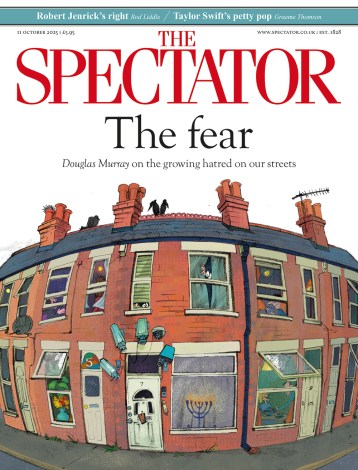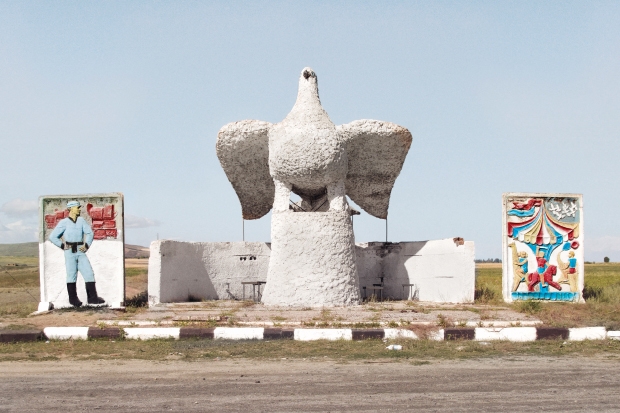The Soviet Union was a nation of bus stops. Cars were hard to come by, so a vast public transport network took up the slack. Buses not only bore workers to their labours, but also breathed life into the ‘union’ itself by taking travellers from town to taiga to desert to seaside. In remoter parts of the country, bus shelters mattered even more than buses, providing convenient places for people to gather, drink and socialise. They were caravanserai for the motor age, and while the empire they served no longer exists, most of them stand right where it left them.
If they are in various stages of ruin now, they are all the more attractive for it. ‘Bus pavilions’, as they were known, were the experimental territory, and ultimately the legacy, of architects who might otherwise have been thwarted by central planning. Many reflect local cultures, and make memorable landmarks. Christopher Herwig, a Canadian photographer, started documenting them when he cycled through the Baltic states in 2002, and kept going after he moved to Almaty a year later. He has since shot varying numbers of them in all the former Soviet republics except (to judge by this book) Russia and Azerbaijan, a labour of 12 years and more than 18,000 miles.
Herwig describes the pavilions as the work of ‘millions of individuals who liked to daydream… and wanted to push the limits of creativity’. Jonathan Meades, who writes the foreword, ironises about freedom of expression in the Evil Empire. Well, there is no doubt that the Soviet Union had the best bus shelters, but the Soviet world left so very much for the eyes that they are hardly sui generis. Their styles are not subversive. Many of them recall either 1920s Soviet modernism or the culture-specific ‘friendship of peoples’ imagery visible in the grander pavilions of the 1930s VDNKh exhibition complex in northern Moscow.

This book, in any case, is an absorbing collection of high-quality photographs, handsomely laid out and designed. Anyone who delves in will find favourites. Kazakh and Kyrgyz designs draw on traditions of horsemanship and falconry. Ukrainian shelters bear vivid, folksy mosaics. Armenian examples are hard and foreboding, while Baltic inventions will please the Ikea crowd. One Moldovan creation, formed from open-fronted dodecahedrons, delivers an SF vibe. Most alien of all are the radiant Gaudi knock-offs in the disputed region of Abkhazia, where Soviet elites once took their beach holidays (inside one of these someone has written, ‘Bitches took away freedom’).
These Abkhazian shelters merit special attention, since they bear a living link to official Moscow. They are the work of Zurab Tsereteli, a well-connected Georgian artist who metamorphosed into an unstoppable schlockmeister of the post-Soviet period. (Cultured Muscovites deplore his 320-foot statue of Peter the Great in the Moscow River.) Tsereteli is the most powerful artist to emerge from the Soviet bus pavilion scene, and his early creations are eccentric and amusing, but his presence here somewhat subverts the harmless charisma of pieces by unknown architects. Herwig has produced an arresting and valuable collection, but one that reminds us that daydreaming and creativity can spawn new monsters.
Available from the Spectator Bookshop, £17.95 Tel: 08430 600033






Comments